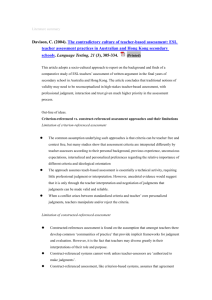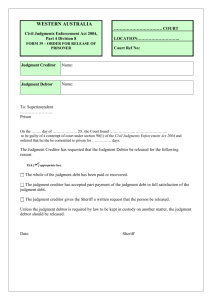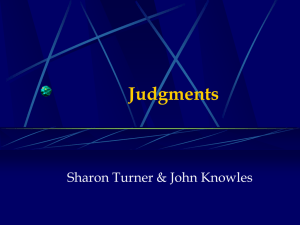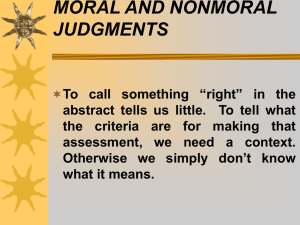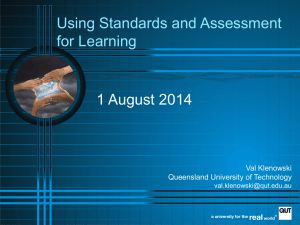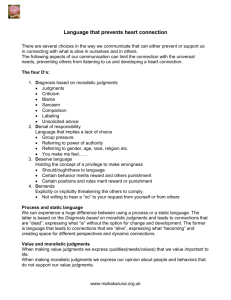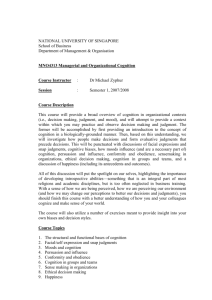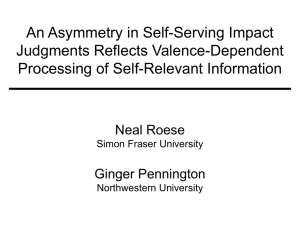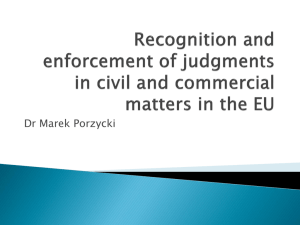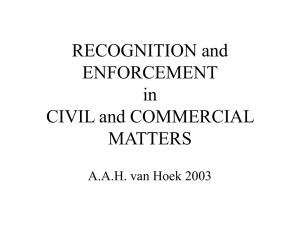Testing the Judgment Watch Monitoring Tool for ESC Rights
advertisement
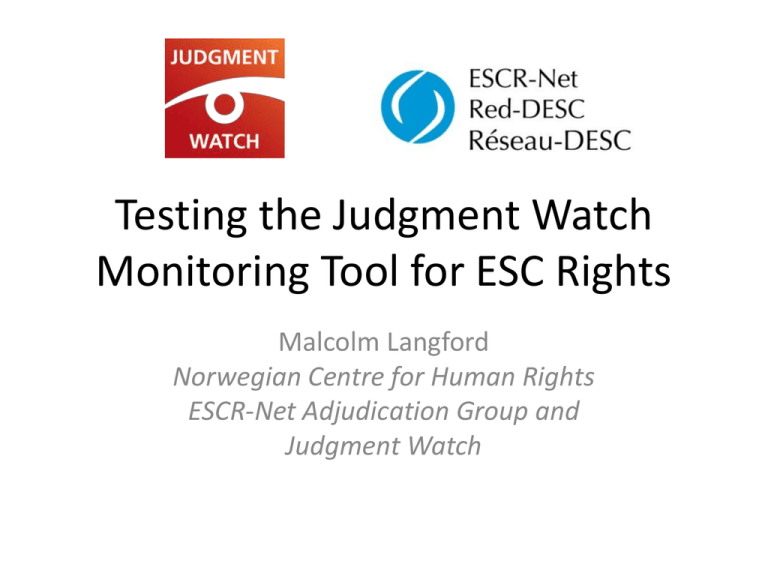
Testing the Judgment Watch Monitoring Tool for ESC Rights Malcolm Langford Norwegian Centre for Human Rights ESCR-Net Adjudication Group and Judgment Watch 500000 Cases? But latin american tutelas dominate • 1970 • 1990 2010 A (partial) social rights litigation explosion Degree of Enforcement and Impact • But growing critique that ESC rights judgments are not enforced or that litigation does not have impact or foster social transformation. • Opinions on the question tend to swing between wild optimism and pessimism. Caution is needed in assessing the existing evidence and the underlying causes. • But there are judgments that remain unimplemented which is problematic for both justice and the legitimacy of ESC rights • Unfortunately, a lack of knowledge on extent of implementation, the causes behind it and good implementation strategies. • There is also a definitional challenge as remedies can be interpreted differently by case actors and commentators. • Impact can be also understood differently: direct/indirect, material/symbolic, material/political, intermediate/outcomes, micro/macro. • The methods chosen to measure enforcement and impact also vary. For advocates, the key challenge is to understand what has been achieved, why and which methods can be used to improve strategies. New Initiatives on Judgment Monitoring • Monitoring and Strategies: e.g., CEJIL IAS Monitoring, World Bank Courts Project, Amnesty Campaigns, Interights v Greece • Research: e.g., Courting Social Justice (2008), From Judgment to Justice (2011), Symbols or Substance (2012), Making it Stick (2013) • ESCR-Net: Bogota Meeting 2010, Follow-Up Regional Workshops, Campaigns and Monitoring (including with Judgment Watch) Housing rights litigation in South Africa: Enforcement and Impact Case Not Evicted or Relocated to Lower Standard Improved Services or Emergency Housing in Short-Run Formal Housing in 5 years Formal Housing in 10 years Improved Community Organisation Policy Change or Innovation Legal Precedent used Average Proportion 81% 56% 43% 100% 63% 75% 50% Grootboom 1 1 0 1 0 1 1 Valhalla 1 1 0 1 1 1 0 0.71 0.64 Modderklipp 1 1 1 1 1 1 1 1.00 Olivia Rd 1 1 0.5 n.a 1 1 1 0.92 Bardale 1 1 1 1 0 1 0 0.71 Joe Slovo 1 0 n.a n.a 1 1 1 0.83 Makuse 1 0 0 n.a. 1 0 0 0.25 Mandelaville 0 0 0 1 0 0 0 0.14 66% Judgment Watch Mandate: The mandate of Judgment Watch is to support, monitor and promote the implementation of human rights judgments. Scope: Judgment Watch will focus on domestic and international court judgments (including decisions of UN treaty monitoring bodies on individual cases) covering all human rights - civil, economic, political, social and cultural. Aims: Judgment Watch aims to: Support implementation by raising awareness about the implementation of judgments and strengthening capacity on follow-up, particularly amongst civil society, lawyers, media, legislatures, the judiciary and other stakeholders. Monitor the implementation of judgments by developing methodologies, synthesizing information and assisting partners on implementation projects. Promote better implementation procedures at the national, regional and international levels. As far as possible in these activities, help maximize the broader impact material, symbolic and political - of judgments b…. Piloting a Monitoring Tool • A draft monitoring tool has been developed to measure the degree of enforcement and identify risks and opportunities for implementation. • In 2011 and 2012, this template will be piloted with ESCR-Net and NCHR in 6-8 jurisdictions for respective judgments on economic, social and cultural (ESC) rights and Lesbian, Gay, Bisexual and Transgender (LGBT) rights.
